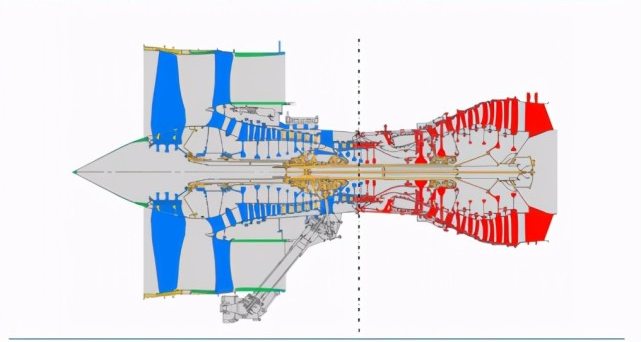The great achievements of the aerospace industry are inseparable from the development and breakthroughs in aerospace materials technology. The high altitude, high speed and high manoeuvrability of fighter jets require that the structural materials of the aircraft must ensure sufficient strength as well as stiffness requirements. Engine materials need to meet the demand for high temperature resistance, high temperature alloys, ceramic-based composite materials are the core materials.
Conventional steel softens above 300℃, making it unsuitable for high-temperature environments. In the pursuit of higher energy conversion efficiency, higher and higher operating temperatures are required in the field of heat engine power. High-temperature alloys have been developed for stable operation at temperatures above 600℃, and the technology continues to evolve.
High-temperature alloys are key materials for aerospace engines, which are divided into iron-based high-temperature alloys, nickel-based by the main elements of the alloy. High-temperature alloys have been used in aero-engines since their inception, and are important materials in the manufacture of aerospace engines. The performance level of the engine depends largely on the performance level of high temperature alloy materials. In modern aero-engines, the amount of high-temperature alloy materials accounts for 40-60 per cent of the total weight of the engine, and is mainly used for the four main hot-end components: combustion chambers, guides, turbine blades and turbine discs, and in addition, it is used for components such as magazines, rings, charge combustion chambers and tail nozzles.
(The red part of the diagram shows high temperature alloys)
Nickel-based high-temperature alloys generally work at 600 ℃ above the conditions of a certain stress, it not only has good high-temperature oxidation and corrosion resistance, and has a high high-temperature strength, creep strength and endurance strength, as well as good fatigue resistance. Mainly used in the field of aerospace and aviation under high-temperature conditions, structural components, such as aircraft engine blades, turbine discs, combustion chambers and so on. Nickel-based high-temperature alloys can be divided into deformed high-temperature alloys, cast high-temperature alloys and new high-temperature alloys according to the manufacturing process.
With the heat-resistant alloy working temperature is higher and higher, the strengthening elements in the alloy is more and more, the more complex the composition, resulting in some alloys can only be used in the cast state, can not be deformed hot processing. Moreover, the increase of alloying elements makes nickel-based alloys solidify with serious segregation of components, resulting in non-uniformity of organisation and properties. The use of powder metallurgy process to produce high temperature alloys, can solve the above problems. Because of the small powder particles, powder cooling speed, eliminating segregation, improved hot workability, the original casting alloy into hot workable deformation of high-temperature alloys, yield strength and fatigue properties are improved, powder high-temperature alloy for the production of higher-strength alloys has produced a new way.
Post time: Jan-19-2024





